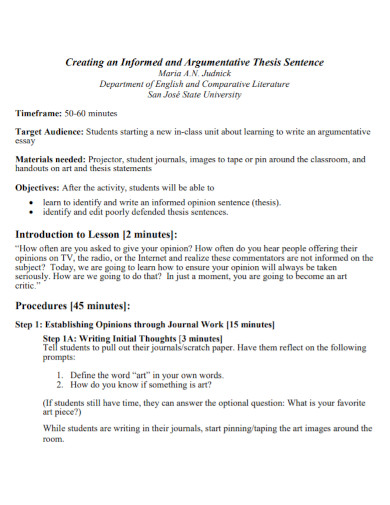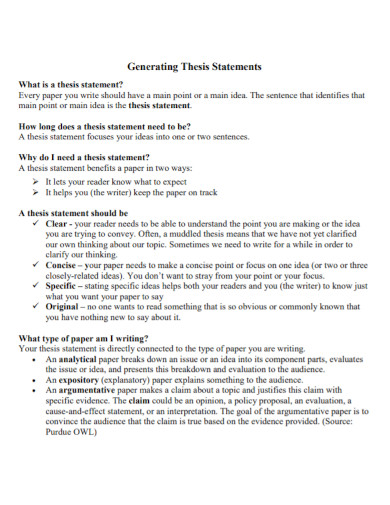4 Argumentative Thesis Statement Examples to Download
In the realm of persuasive writing, the argumentative thesis statement stands as a pivotal element, guiding the entire context of an essay or research paper. It serves as the beacon that directs your work, letting readers know not only what to expect but also the position you’re advocating. This article dives into the depths of argumentative thesis statement examples, unraveling their significance, and offering a step-by-step guide on how to create one effectively.
3+ Argumentative Thesis Statement Examples
1. Argumentative Essay Thesis Statement
2. Argumentative Thesis Statement Example
3. Printable Argumentative Thesis Statement
4. New Argumentative Thesis Statement
What is an Argumentative Thesis Statement?
Before we delve into the intricacies of crafting a compelling argumentative thesis statement, let’s clarify what this vital element entails. An argumentative thesis statement serves as the core assertion of your essay, presenting your stance on a particular theme or topic. It goes beyond a mere description of the subject; it takes a firm position that you will defend with logical reasoning, evidence, and persuasion.
How to Craft an Argumentative Thesis Statement
Creating an argumentative thesis statement requires a methodical approach. By following these steps, you’ll be better equipped to develop a thesis that not only captures the essence of your argument but also engages readers from the outset.
Step 1: Identify Your Topic and Stance
The first step involves identifying the simple subject you’re addressing and your position on it before starting with the introduction. Your stance could be an assertion, a judgment, or an evaluation, shaping the tone and direction of your entire argument.
Step 2: Analyze Your Audience
Understanding your audience is crucial. Consider their perspectives, beliefs, and potential objections. Tailoring your argumentative thesis statement to resonate with your readers enhances the persuasiveness of your message.
Step 3: Develop a Concise Thesis
A strong thesis is concise and focused. It should encapsulate your main argument while giving a glimpse of the supporting points you’ll discuss. Avoid vague language and ensure your thesis statement is clear and direct.
Step 4: Incorporate Cause and Effect
A compelling argumentative thesis statement often involves demonstrating the cause-and-effect relationship between your stance and the topic. Highlight how certain actions, beliefs, or decisions lead to specific outcomes.
FAQs
Can my argumentative thesis statement evolve as I research and write?
Absolutely. Your thesis can and should evolve based on your research findings and the development of your argument. Flexibility allows you to refine and strengthen your position.
How can I avoid falling into clichés when crafting my thesis statement?
To avoid clichés, strive for originality. Instead of using well-worn phrases, express your position in a unique way that showcases your perspective and analytical depth.
Should I include counterarguments in my thesis statement?
While it’s not necessary to include counterarguments in your thesis statement, acknowledging opposing viewpoints can add credibility to your argument. However, save the detailed counterarguments for the body of your essay.
In conclusion, the argumentative thesis statement is the heart and soul of your persuasive composition. It shapes the theme, sets the tone, and guides the exploration of your chosen subject. Through careful consideration of your topic, audience, and the cause-and-effect relationships at play, you can draft a compelling and impactful thesis statement that forms the backbone of your argument. Remember, crafting an effective argumentative thesis statement is an art that combines eloquence, evidence, and persuasion, ultimately leading your readers to embrace your perspective.






